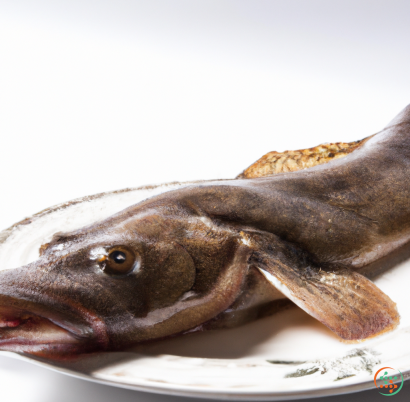Tuna
Tuna - A Short Introduction
Tuna fish, also referred to as ‘barracudas’, are an interesting and popular species of fish that can be found in a variety of forms throughout the world. Tuna, most commonly known for their use in sushi, are found in all oceans and are known by many different names depending on the parts of the world they are found in. These creatures are incredibly important to the world’s economy and provide multiple benefits, both economically and biologically, making them one of the most commercially important species of fish found in the wild today.
From a biological standpoint, tunas are often regarded as the most efficient swimmer in the sea. This enables them to move quickly over vast distances and allows them to take advantage of high amounts of food, growing to lengths of up to 15 feet in some cases. Though tuna are relatively fast swimmers, they are not considered to be the best at deep-sea diving, only able to reach depths of between 300 and 500 meters below the surface.
Tuna are known for their characteristic torpedo like shape and streamlined bodies, which helps them to quickly swim through the water. They have dark blue backs with dark blotch patterns and light yellow bellies, allowing them to easily blend into their surroundings when hunting prey or avoiding predators. Tuna have several rows of razor-sharp, translucent teeth that helps them to catch and hold their prey and also serve as a type of defense mechanism against predators, such as sharks or other fish.
Tuna are one of the few fish species that are able to regulate their core body temperature and maintain it above the surrounding ocean temperature. This unique feature allows them to inhabit various regions of the ocean, regardless of how cold the waters may be and allows them to survive better than many other fish species. They also have an incredibly strong sense of smell and hearing that help them to sense danger or find food.
This unusual fish is loosely associated with a number of different species, ranging from mackerels and bonitos to herrings and Spanish mackerels. However, tuna species are much larger and more widely distributed than their relatives. Generally, tuna live their lives alone or in small groups and only gather in large schools during mating season. In terms of diet, tuna feed mostly on other fish, squid, and crustaceans and are known to be powerful predators owing to their sleek shape and speed.
The current status of the world’s tuna fisheries is an area of great interest and concern for many. Unfortunately, overfishing has placed unsustainable levels of pressure on tuna stocks worldwide, putting a strain on these creatures’ populations. Although tuna fisheries are largely managed by international regulations, the future of these unique creatures still remains uncertain.
Tuna are an incredibly important species of fish, both economically and biologically, which is why they remain so popular in the fishing industry. Not only are they a delicacy to many, they are also an economic resource that benefits global economies. With efforts to ensure sustainable fishing practices, as well as responsible management of tuna populations worldwide, there is hope that these species will continue to thrive in the years to come.
Tuna: From Ocean To Dinner Plate
Tuna is a key component of many healthy diets around the world. From canned tuna in a sandwich to sashimi in sushi, tuna is a versatile and delicious seafood source. But have you ever stopped to think about just how many steps it takes to go from the ocean to your dinner plate? Let’s take a look at the journey of a tuna from the ocean to your meal.
At the start of its journey, tuna can be found in the open water of the ocean. In particular, certain species of tuna live in temperate and sub-tropical waters. This includes the bluefin tuna, one of the most popular varieties of fish eaten as sashimi. Tuna live in these regions because they prefer warm waters, with plenty of prey to eat, such as shrimp and small fish.
Once spotted by fishermen, the tuna are caught using several nets designed to trap the fish in the correct size and quantity. Nets are also designed to minimize damage to the tuna in order to preserve its freshness and quality. After being caught, the tuna is transferred onto a fishing vessel, where it will eventually be processed for sale.
The next step in the process is the cleaning of the tuna. The fish is gutted and its scales are removed. Then it’s placed in a container to await packaging or shipment. Depending on the type of tuna and the buyers’ specifications, the fish may be frozen or delicately filleted and placed into ice.
From the fishing vessel, the tuna is shipped to seafood packing facilities. At the packing facility, the tuna is processed according to the buyer’s preferences. Filleting is an option; however, some buyers prefer to purchase tuna in its whole state. In these cases, the packing facility will package the tuna correctly, before it is transported to consumer outlets.
Once purchased, the tuna reaches its destination. Depending on its intended use, the tuna only needs to be defrosted and cleaned. However, if the consumer wishes to prepare the fish for sushi (sashimi in particular), additional steps need to be taken.
The preparation for sashimi is a complicated endeavor and should only be done by experienced professionals. First, the tuna must be gutted, deboned and filleted. Then it must be trimmed, washed, and soaked in vinegar water. This process helps to cleanse the fish and remove any impurities.
The tuna should then be blanched in order to remove any remaining toxins or proteins on the fish’s skin. The blanching step is often done by hand since the professionals need to ensure that the process is not done for too long. Finally, the tuna should be seasoned with salt and chilli, and sliced into thin pieces.
After being prepared, the sashimi is ready to be served and enjoyed. Sashimi is often served with soy sauce, wasabi, and ginger slices as accompaniments. The flavor and texture of sashimi comes from its freshness. Therefore, it is always recommended to consume sashimi as soon as it is prepared to get the full flavor and experience.
From the open ocean to our dinner plates, the journey of tuna is a fascinating study in the complexity of global seafood supplies. This is especially true for those of us who prioritize sustainable fishing practices. By understanding the effort and care that goes into the journey of tuna from ocean to dinner plate, we can be sure to support fisheries that adhere to ethical and sustainable standards.
| Vitamin A | 0.017 mg | |
| Vitamin D | 0.0012 mg | |
| Vitamin D3 | 0.0012 mg | |
| Vitamin E | 0.33 mg | |
| Vitamin K | 0.2 ug | |
| Vitamin B1 | 0.03 mg | |
| Vitamin B2 | 0.08 mg | |
| Vitamin B3 | 0.01014 grams | |
| Vitamin B4 | 0.0293 grams | |
| Vitamin B5 | 0.15 mg | |
| Vitamin B6 | 0.32 mg | |
| Vitamin B9 | 0.004 mg | |
| Vitamin B12 | 0.00255 mg |
| Calcium | 0.017 grams |
Daily Value 1.3 g
|
| Iron | 0.00163 grams |
Daily Value 0.018 g
|
| Magnesium | 0.023 grams |
Daily Value 0.4 g
|
| Phosphorus | 0.139 grams |
Daily Value 1.25 g
|
| Potassium | 0.179 grams |
Daily Value 4.7 g
|
| Sodium | 0.247 grams |
Daily Value 2.3 g
|
| Zinc | 0.69 mg |
Daily Value 0.011 g
|
| Copper | 0.05 mg |
Daily Value 0.9 mg
|
| Manganese | 0.02 mg |
Daily Value 0.0023 g
|
| Selenium | 0.0706 mg |
Daily Value 0.055 mg
|
| Fluoride | 0.0186 mg |
Daily Value 0.004 mg
|
| Tryptophan | 0.209 grams | |
| Threonine | 0.817 grams | |
| Isoleucine | 0.858 grams | |
| Leucine | 1.514 grams | |
| Lysine | 1.711 grams | |
| Methionine | 0.551 grams | |
| Cystine | 0.2 grams | |
| Phenylalanine | 0.727 grams | |
| Tyrosine | 0.629 grams | |
| Valine | 0.959 grams | |
| Arginine | 1.115 grams | |
| Histidine | 0.548 grams | |
| Alanine | 1.127 grams | |
| Aspartic Acid | 1.907 grams | |
| Glutamic Acid | 2.78 grams | |
| Glycine | 0.894 grams | |
| Proline | 0.659 grams | |
| Serine | 0.76 grams |
| Total Sugars | 0 ug |
per 100g
|
| Capric acid (10:0) | 0.01 grams |
|
| Myristic acid (14:0) | 0.01 grams |
|
| Palmitic acid (16:0) | 0.13 grams |
|
| Stearic acid (18:0) | 0.05 grams |
|
| Total Saturated fatty acids: | 0.2 g | |
| Oleic acid (18:1) | 0.08 grams |
|
| Palmitoleic acid (16:1) | 0.02 grams |
|
| Total Monounsaturated fatty acids: | 0.1 g | |
| Omega-3 Timnodonic acid (20:5) | 0.03 grams |
|
| Linoleic acid (18:2) | 0.01 grams |
|
| Total Polyunsaturated fatty acids: | 0.04 g | |
| Cholesterol | 0.04 grams |
|
| Total Sterols: | 0.04 g | |







